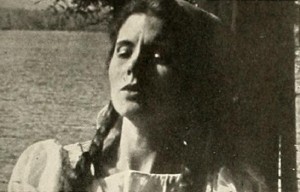
"The prizewinner for color, 'This Side of Paradise,' was in Kodachrome and entered by A. Scott Moorhouse of Toronto, a member of the Toronto Amateur Movie Club. The locale of the subject was the Italian and Swiss mountains and lakes. The decision on color or rather the reaching of it constituted one of the committee's chief headaches. There were some remarkable examples submitted. Mr. Moorhouse has a right to feel proud of his product." American Cinematographer, Jan. 1938, 27.
"An intelligent, informative story of glaciers, rivers and meadows in the Canadian Rockies. Music and narration well above average. In a land frequented by many vacationing photographers who usually shoot conventional scenes from the main highway, the advantages gained from striking off on foot over the trails are pleasingly evident in this enjoyable film" PSA Journal, Dec. 1955, 35.
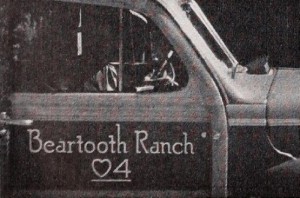
"Two Dudes In Montana, by Lester F. Shaal, is an engaging and altogether competent record of a dude ranch vacation. In it, two attractive Eastern youngsters are seen adapting themselves with enthusiasm to the strange and stimulating adventures of Western ranch life. Developing his theme deliberately and in carefully integrated continuity, Mr. Shaal shows his tenderfeet taking to the saddle for safaris which progress from an afternoon's outing to full scale pack trips into the high mountains. The producer brings to this subject matter a fine technical skill with movie tools which has long been his. New and rewarding in his present work is an evolving eye for the appeal of human interest." Movie Makers, Dec. 1948, 496.
"In Two Weeks, W. W. Champion has contrived that rare and refreshing thing — a personal record picture implicit with general human interest. Telling the story of a fortnight's pack trip with friends through Yosemite, the film gets off to a flying start with a delightfully detailed sequence of camp preparations. With complete naturalness, we are made acquainted with each of the vacation party. When, in good time, they set off down the trail, we feel quite sure that these people will prove of more interest than the locales that they will visit. Mr. Champion does not disappoint us, as he continues with an adroitly spun pattern of personalities and places. Crisp, steady and effectively angled, the photography of the film, in both monochrome and color, is of able assistance to the imaginative treatment." Movie Makers, Dec. 1936, 542.
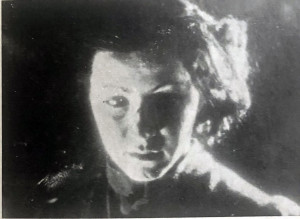
"a sogg. lungh. norm."/feature-length feature film
“Uno della Montagna è l’esaltazione della lotta dell’uomo contro la natura. La montagna (è questa la leggenda) colpisce con la morte tutti quelli che tentano conquistarla. A valle gli uomini e gli animali vivono nella più catastrofica miseria, mentre al di là della sommità vi è un “Alpe” intatto: è necessario trovarne il valico. Esso offrirà alle popolazioni affamate nuove e più fertili,. Due giovani animosi, attraverso non poche peripezie, tentano l’impresa ed uno di essi, più coraggioso e più generoso dell’altro, che abbandona il compagno in un momneto difficile, porta a termina la scalata fra l’esultanza dei valligiani. La vicenda è animata da una delicata storia d’amore.”
“One of the Mountain is the exaltation of the struggle of man against nature. The mountain (this is the legend) punish by death all those who attempt to conquer it. In the valley, men and animals live in the most catastrophic misery, while beyond the summit there is an intact “Refuge”: it is necessary to find the pass. It will offer new and more fertile land to the starving populations. Two courageous young men, through many vicissitudes, attempt the enterprise and one of them, more courageous and generous than the other, who abandons his companion in a difficult moment, completes the climb to the exultation of the valley dwellers. The episode is animated by a delicate love story."
—Notizario delle sezioni cinematografiche dei gruppi universitari fascisti a cura del ministero della cultura popolare, September 1938 p. 10
Excursión a los montes de Urbia y Aralar. El filme muestra un paisaje maravilloso por los senderos del parque natural de Aralar y una acampada en las praderas de hierba verde de Urbia, una ruta clásica entre montañeros que incluye el paso por localidades emblemáticas.
An excursion to the Urbia and Aralar mounts. The film depicts a wonderful landscape through the paths of the Aralar natural park, and a camping trip through the green prairies of Urbia, a classic route for mountaineers that includes passing through emblematic places.
"Fred Hudson and Donal Michalsky of Los Angeles combined their talents to produce on black-and-white film the origin of a mountain storm and its eventual metamorphosis as a turbulent stream of water. The storm is depicted in gathering clouds moving swiftly among mountain peaks, thanks to ultra-speed photography. Highly artistic shots of the first raindrops falling on a pool indicate the break of the storm, and the camera then records in excellent rainfall shots the progression of the storm, forming of rivulets and their eventual building up to a mountain stream. The various moods are enhanced by the theme music on the sound track, excellently recorded." American Cinematographer, May 1951, 192.
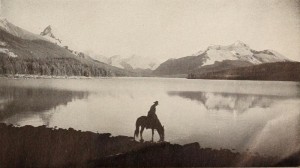
"Western Holiday offered one of those thrills in the sequence of sunrise on Mount Robson. Here Kodachrome caught, with what seemed magic, the first rosy glow on the cold, blue snow, which the continuity of photographic motion permitted to increase, to blossom and, finally, to blaze into a chromatic crown of jewels. To see this on the screen is to enjoy a rare experience. Hamilton H. Jones, in the highly intelligent cutting of his train sequences, gave the student of continuity another of these thrills. Those who are charmed by double turntable accompaniment will recognize the perfection with which an almost impossibly difficult feat of lip synchronization with record scoring has been handled. These are some of the higher spots in a film of unusually high general average. Mr. Jones is a Kodachrome movie maker of proved ability, who has made editing a special art. The film chosen for the first Hiram Percy Maxim Memorial Award will be used by Mr. Jones in his work as a lecturer on the vacation advantages of the Dominion of Canada, although it was made as his own enterprise, entirely at his own expense and not for compensation from a client. It is a part of his professional equipment. Briefly reviewed, Western Holiday carries the audience, via Canadian National Railways, from Victoria, Canada's most westerly metropolis, across the Rocky Mountains back to the Eastern Seaboard. Beginning with city views in Victoria and Vancouver, with strikingly colorful parades of the famous Canadian Mounted Police, we visit tourist centers and make trail trips from them. The camera goes into the interior of a glacier, it finds mountain goats and sheep, it clambers over the Continental Divide on horseback. All through the trip, it studies the progress of trains, weaving in and out of tunnels and over bridges. In his personal presentations of this film, Mr. Jones manipulates effects, such as whistles, bells, train noises and other oddments, with something approaching wizardry. In the face of competition of the highest order, Western Holiday is its own justification of preferment." Movie Makers, Dec. 1937, 602.
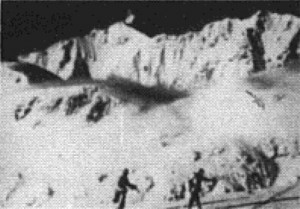
"A story of the natural wilderness, people, and mountains 200 miles from the sea, the wilderness alps of Stehekin in the North Cascade country. Brought into its scenic grandeur through the ages never the same, yet not to be changed by man. There are the wild gardens and glaciers high above the sea but far below the icecaps on Mt. Rainier, from time preceding us. A beautiful, relaxing retreat with a narration to be remembered for its refreshing call to the wilderness" PSA Journal, Nov. 1960, 42.
"Winged Hickory on the high snow-covered slopes in the area of Aspen, Colorado (not far from Denver) is a nostalgic piece of winter ski sports by Theodore H. Sarchin. Aspen is a famous old, deserted silver mining town that has been rejuvenated by ski enthusiasts taking advantage of the excellent slopes and weather conditions. The ski lift is the longest in the world. It requires 40 minutes to ride its full length, in two sections, to an elevation of 11,300 feet. There are beginner and novice trails and challenging slopes for the experienced skier. There are vistas of the towering snow-covered mountains as well as activities in camp. During one of the Gala Days, Mr. Sarchin photographed some unusually expert skiers, such as one on tall stilts, and four men on two long skis, sort of like four men on a horse. The beauty and grace of the skiers, speeding along with the snow feathering out behind, make the rugged beauty of the terrain an outstanding picture. The background music is well chosen and Mr. Sarchin's narration is adequate" PSA Journal, Nov. 1957, 53.
Total Pages: 8